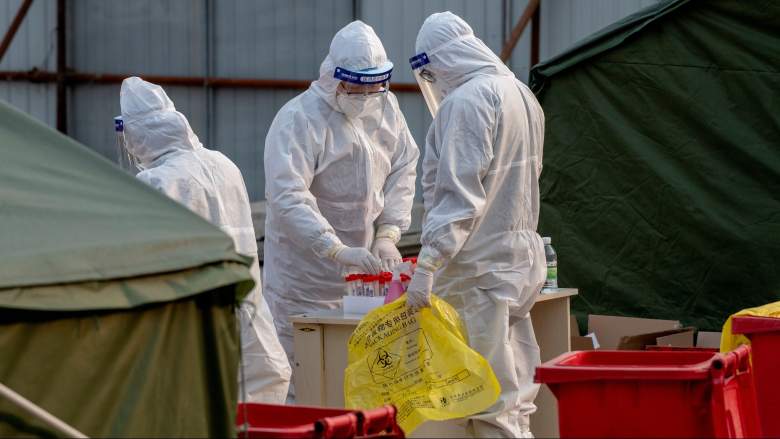
China is testing some of its residents for coronavirus using an anal swab rather than a throat or nasal swab, as scientists note that the anal swab might be more accurate. In Beijing, China is pushing to test millions of people after two cases of a more virulent strain of the virus were detected.
Anal Swab Testing Could Be More Accurate, Expert Says
Some experts have said that anal swabs are more accurate, although the nasal and throat swabs are still used in many cases due to speed and convenience, Newsweek reported. About 1.6 million people in Daxing are supposed to be given antibody tests, and throat, nasal, or rectal swabs. The anal swabs are typically used for hotspot regions.
Beijing You’an Hospital’s Li Tongzeng said that anal swabs are the most accurate because the coronavirus survives longer in the digestive tract or in excrement, Newsweek reported. Throat swabs are still the most widely used, however, because they are fast and convenient. Nasal swabs are more accurate than throat swabs, and anal swabs are more accurate than nasal swabs, he said.
“Of course, anal swabs aren’t as convenient as throat swabs, so they’re only being used on individuals in key quarantine areas,” Tongzeng said.
This isn’t the first time that China has used anal swabs, which have also been used for testing in Shanghai, Newsweek reported. Health guidelines in China require the swabs to be placed 1.2 to 2 inches inside the rectum, rotated, and then removed.
Tongzeng said: “What we’ve found is that in some infected patients, the coronavirus survives for a longer period of time in their digestive tract or excrement than in their respiratory tract.”
This isn’t the first time that experts have recommended anal swabs as possibly being more accurate. In August 2020, for example, Future Medicine reported that anal swabs likely provided the “optimal specimen” for SARS-CoV-2 detection when determining if a patient should be discharged from a hospital.
The study noted: “In this study, we found that SARS-CoV-2 detection was positive in anal swabs but negative in other sample types of a few cured patients, which challenges the current standards for discharge and termination of compulsory isolation for COVID-19 patients. Similar to SARS-CoV and MERS-CoV patients, intestinal infection was observed in the later stages of infection, indicating that the clearance time of SARS-CoV-2 in the digestive tract was later than that in the respiratory tract.”
Not all Experts Agree with Anal Testing
Yang Zhanqiu, a deputy director of the pathogen biology department at Wuhan University, said that anal swabs may not be the right choice since the virus is contracted through the respiratory tract, not the digestive system, Global Times reported.
Zhanqiu said nasal and throat swabs are the most efficient and best choice.
Yang told Global Times: “There have been cases concerning the coronavirus testing positive in a patient’s excrement, but no evidence has suggested it had been transmitted through one’s digestive system.”
China’s Mass Testing Effort Began After a Child Tested Positive for a More Virulent Strain
The mass testing effort was kicked off after a nine-year-old boy tested positive on Friday for a more virulent strain of the virus, Newsweek reported. Health authorities want to screen more than two million people in Beijing in 48 hours.
More than 1,200 people at a school that the child attended were given nasal, saliva, and anal swabs, plus serum tests, SCMP reported. All the tests were negative.
SCMP reported that there were two confirmed cases of the more virulent strain in Beijing, and the child was asymptomatic. A partial lockdown was put in place in Daxing and Shunyi.
On January 21, CBS News reported that China was building a quarantine camp with 4,000 isolation units for people who had close contact or secondary contact with a COVID-19 patient. The isolation center was just on the outside of Shijiazhuang city in the Hebei Province. The rooms were each 194-square-feet, with WiFi, a TV, bed, desk, and bathroom. China had put millions of residents of Shijiazhuang in lockdown and was determined to test all 11 million residents after a surge of 800 cases. But the work at containing the virus reached a new level when cases of the more infectious strain were discovered in Beijing.
READ NEXT: The latest COVID-19 deaths, cases, and updates